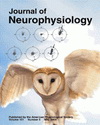Visual-auditory processing
 Visual and auditory information is integrated in the brain to facilitate the perception of events that can be both seen and heard. The barn owl, with its excellent visual and auditory capabilities, provides an interesting case study for the mechanisms of visual auditory integration. Moreover, it was shown in barn owls that interactions between visual and auditory signals play an important role in auditory map plasticity. We focus on responses of multisensory neurons in the optic tectum, a mid-brain structure which contains aligned auditory and visual maps of space. Our findings corroborated results obtained in mammals, that responses to correlated visual and auditory stimuli are enhanced. But, we have also found that this enhancement was context dependent, being stronger in stimuli which appeared after a long period of silence, compared with stimuli that were embedded in a sequence of similar stimuli. In addition, we have shown that responses to correlated visual and auditory stimuli can be enhanced not only in the number of spikes but also in their ability to follow the temporal modulation of the stimulus (phase locking). In a second project, we studied the tectofugal pathway. Using a series of electrophysiological and pharmacological experiments we were able to show that this pathway carries auditory information from the optic tectum to the forebrain, in addition to visual information. Currently we are investigating visual auditory integration of motion information in the OT. For this we are employing virtual acoustic space techniques to simulate acoustic motion at various speeds and directions. Visual and auditory information is integrated in the brain to facilitate the perception of events that can be both seen and heard. The barn owl, with its excellent visual and auditory capabilities, provides an interesting case study for the mechanisms of visual auditory integration. Moreover, it was shown in barn owls that interactions between visual and auditory signals play an important role in auditory map plasticity. We focus on responses of multisensory neurons in the optic tectum, a mid-brain structure which contains aligned auditory and visual maps of space. Our findings corroborated results obtained in mammals, that responses to correlated visual and auditory stimuli are enhanced. But, we have also found that this enhancement was context dependent, being stronger in stimuli which appeared after a long period of silence, compared with stimuli that were embedded in a sequence of similar stimuli. In addition, we have shown that responses to correlated visual and auditory stimuli can be enhanced not only in the number of spikes but also in their ability to follow the temporal modulation of the stimulus (phase locking). In a second project, we studied the tectofugal pathway. Using a series of electrophysiological and pharmacological experiments we were able to show that this pathway carries auditory information from the optic tectum to the forebrain, in addition to visual information. Currently we are investigating visual auditory integration of motion information in the OT. For this we are employing virtual acoustic space techniques to simulate acoustic motion at various speeds and directions.
Related Articles:
|

